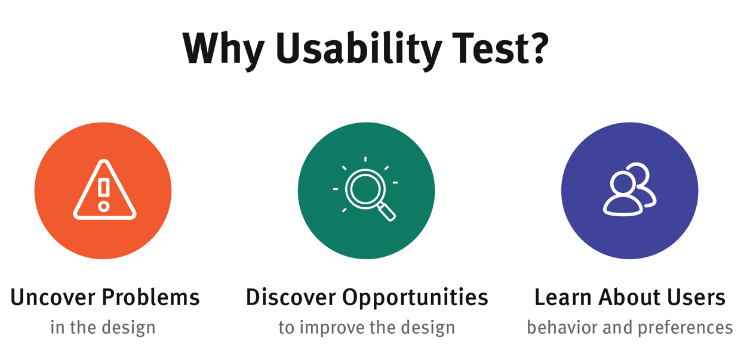Usability Testing
What is Usability Testing?
Definition:
Usability testing in technology refers to the systematic evaluation of a digital product’s user interface and overall user experience to ensure it meets the needs and expectations of its intended audience. This testing process involves real users interacting with the technology, providing valuable insights into its functionality, ease of use, and the overall satisfaction of the end-users.
Analogy:
Consider usability testing as a technology trial run, akin to a car undergoing rigorous testing before hitting the market. Just as test drivers assess a vehicle’s performance, comfort, and user-friendliness, usability testing allows real users to navigate through digital interfaces, identifying potential issues and contributing to the refinement of the technology.
Further Description:
Usability testing covers a spectrum of activities within the development lifecycle, including:
Navigation and Interface Design: Assessing the intuitiveness and efficiency of navigating through different screens, features, and menus.
Functionality and Task Performance: Evaluating how well users can perform specific tasks within the technology, highlighting any obstacles or areas of improvement.
Error Identification and Recovery: Analyzing how easily users can identify errors, understand error messages, and recover from mistakes without frustration.
Accessibility and Inclusivity: Ensuring the technology is accessible to users with diverse needs, including those with disabilities, and promoting an inclusive user experience.
Response Time and Performance: Testing the speed and responsiveness of the technology, identifying potential lags or delays that may impact user satisfaction.
Why is Usability Testing Important?
Enhanced User Experience: Usability testing helps create a seamless and enjoyable experience for users, increasing satisfaction and fostering positive perceptions of the technology.
Issue Identification: It uncovers potential usability issues and pain points early in the development process, allowing for timely adjustments and improvements.
Market Competitiveness: A user-friendly technology stands out in the market, contributing to its competitiveness and potential for widespread adoption.
Reduced Support Costs: By addressing usability issues before launch, businesses can minimize the need for customer support, reducing associated costs and improving overall efficiency.
Examples and Usage:
User Testing Platforms: Platforms like UserTesting.com enable businesses to conduct remote usability testing with diverse user groups, collecting valuable feedback on digital interfaces.
Eye Tracking Technology: Utilizing eye-tracking devices to analyze where users focus their attention on a screen, providing insights into visual hierarchy and user engagement.
Mobile App Usability Testing: Ensuring mobile applications are user-friendly, with testing scenarios covering navigation, touch interactions, and compatibility across different devices.
Key Takeaways:
- Usability testing involves real users evaluating the user experience of a digital product.
- It covers aspects like navigation, functionality, error handling, accessibility, and performance.
- Benefits include improved user satisfaction, early issue identification, market competitiveness, and reduced support costs.
- Examples of usability testing tools include user testing platforms and technologies like eye tracking for in-depth analysis.
Table of Contents





